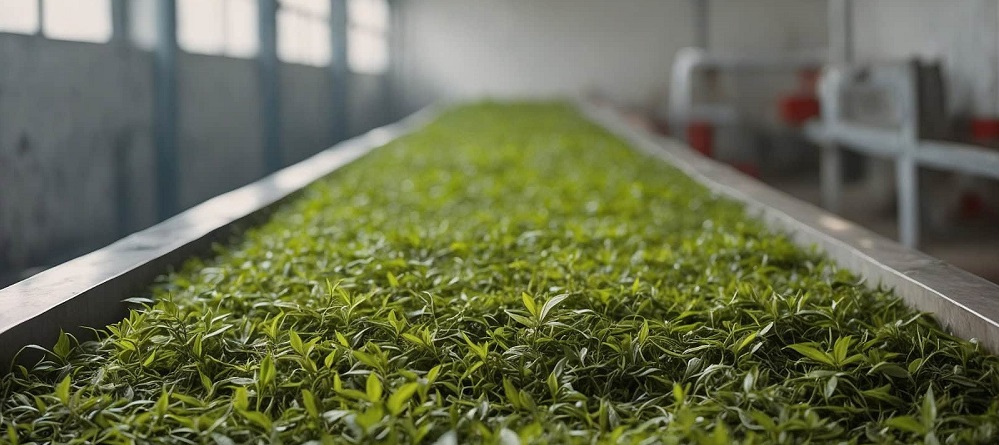Through this article, let us decipher the grading of tea- how it works. Tea has a rich history and diverse varieties. It has been cherished for centuries across the world. But do you know there is a long process behind the grading of tea?
From determining the quality to identifying the characteristics, there is a long process. These include cultivation, harvesting, processing, and grading. Tea grading is a method used in evaluation and categorization of tea leaves. This is based on various factors like size of leaf, appearance, aroma, taste, etc.
Leaf Appearance
It is a primary factor in deciding the grading of tea. Tea leaves come in a variety of sizes, and qualities. Larger and whole leaves are sometimes considered high quality as they tend to retain more natural flavour. However, the grading based on appearance is primarily dependant on the target market and end-consumer preference.
Color of tea leaves vary because of oxidation and processing methodology. Let us understand this with an example; during black tea grading, the blacker and more even colour distribution is considered better quality. However, in the case of Uva and Nuwara Eliya teas, this phenomena is somewhat different as the quality is defined by the taste in the brewed cup instead of leaf appearance.
In some teas, if there is an appearance of silver or golden tip, it is considered high quality.
Similarly, consistency in leaf size and shape is another important aspect of grading. Tea leaves
that have uniformity and homogeneous appearance are favoured for their quality.
Processing
Different types of tea leaves undergo varied processing techniques. Such techniques impact the aroma and flavor of tea. Withering is the initial process. Moisture content is reduced in the freshly harvested tea leaves.
The next step is fermentation or oxidation. It is essential to enhance the flavor of the tea. The final process is firing or drying. To preserve the aroma and flavor of the tea, the leaves are subjected to heat.
A combination of all the above processes helps enhance and maintain the taste of the tea leaves. These steps also develop the characteristic color of the tea leaves.
The last stage of manufacturing tea, before packing is the grading process. Several semiautomated and mechanical systems are used for this particular stage of manufacture.
Common Grading Systems
Though common grading systems vary across regions and countries, most systems are somewhat similar or close to the individual process steps.
In many tea-producing areas, the grading system is based on a combination of letters and numbers. Each combination represents specific appearance and characteristics seen in the tea. Sri Lanka, one of the largest tea exporters in the world, uses different categories of grading systems.
The most prevalent grading systems are discussed below.
Orange Pekoe (OP)
Orange Pekoe is a term associated with high-quality whole leaf black teas. The term “orange” does not relate to the color of the tea here. Rather, it is believed to originate from the Dutch House of Orange- Nassau, a royal dynasty. Orange Pekoe (OP) consists of large, well twisted unbroken leaves.
Orange Pekoe is a particular system related to the grading of black tea. It basically means the tea that is made using tender leaves and bud. The leaves, when plucked, are whole. They are used as they originally were and are not broken. It is mellow in flavor and naturally sweet and bright in cup.
Broken Leaf Grades
As per the name, broken leaf grades is the system to grade broken or fragmented leaves. These teas are graded based on the size of the leaf particles. It may include grades such as Broken Orange Pekoe (BOP) and Broken Pekoe (BP).
A distinct feature here is that broken leaf grades may or may not possess the aesthetic visual appeal of whole leaves. They often offer a robust flavor profile that is ideal for strong brewing. This process results in a darker liquid than the whole leaf.
The leaf used in this manufacture undergoes greater maceration and the cup is darker in color. For this, the leaf undergoes the process of hard rolling after withering. The process accelerates oxidation, which in turn enhances the release of flavor compounds.
Fannings and Dust
One can understand this by the name itself. Fanning and dust are the smallest grades of tea particles. These are the result of processing larger leaf grades. Fannings consist of smaller leaf particles and dust consists of even smaller or finer particles.
These are common grades used for tea bags. This also assists quick brewing. But overall, the quality is lower compared to whole and broken grades. Fannings and dust resemble a lot of finer tea particles. This grading produces strong, robust brews with intense flavor and color.
Conclusion
Grading of tea goes through many stages. It begins from checking the leaf size, sieving and separation, etc. to determine the quality of the graded leaves.
Whether it is the whole leaf of Orange Pekoe or broken leaf grades, each grade offers a unique aroma and taste suitable for several brewing applications. Thus, grading of tea is a lengthy and finely detailed process.
Contact Anverally a leading tea exporters in Sri Lanka to buy Ceylon tea.


